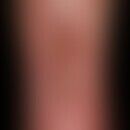Synonym(s)
Bio-Debridement; Debridement; Wound debridement; Wound toilet
DefinitionThis section has been translated automatically.
Medical procedure for the removal of avital, often infected and poorly healing fibrinous tissue from chronic wounds (see skin ulcer below). The aim is to initiate the healing process, to prevent progressive secondary infection of surrounding healthy tissue and also to ensure better visual control of the wound situation. Consistent wound debridement conditions the wound bed for subsequent wound treatment. A prerequisite for effective wound debridement is sufficient blood supply to the still vital tissue.
General informationThis section has been translated automatically.
The following different methods are used:
- Surgical debridement (method of 1st choice): If necessary (painfulness), it is carried out under local anaesthesia (possibly combined with systemic analgesia) by means of local anaesthetic external anaesthetic (EMLA cream) or by injection of a local anaesthetic. Debridement under anaesthesia is rarely necessary. Scalpel, sharp spoon or ring curette are used. Fibrin coatings and necroses can be removed and the bacterial load reduced at the same time. DRG-relevant debridements are usually performed in the operating theatre under local anaesthesia (e.g. Emla), with the debridement boundary running through the vital tissue. During the surgical procedure, the cleaned wound is rinsed out with isotonic saline solution or with tap water. The border of the surgical procedure is based on the course of larger vessels or nerves. Repeated surgical treatment is often necessary, e.g. if necrosis formation continues after debridement.
- Enzymatic debridement: Proteolytic enzymes that can hydrolyse peptide compounds are used. Clostridiopeptidase A, a bacterial collagenase, breaks up the triple helix of various collagens, the resulting peptides induce further degradation of collagen. Streptokinase catalyzes the generation of plasmin from plasminogen, plasmin degrades fibrin, fibrinogen, factor V and VIII. Streptodornase and deoxyribonuclease selectively cleave double-stranded DNA in avital tissue. Fibrinolysin inactivates fibrinogen and the clotting factors I, V and VII. Due to the short half-life of fibrinolysin, application every 6-8 hours is recommended. Examples include collagenase-clostridiopeptidase A (Iruxolum mono ointment), streptokinase/streptodornase (varidase gel), deoxyribonuclease/fibrinolysin (fibrolan ointment).
- Biological debridement (biosurgery): maggot therapy: using fly larvae (Lucilia sericata, golden fly of the blowfly family) supplied in special bags (so-called bio-bags). These bio-bags remain on the wound for 5 days. There are several points of attack: mechanical irritation and proteases from the digestive secretions of maggots promote debridement. The antimicrobial effect of maggot secretion is caused by the secretion of ammonia and calcium bicarbonate with a shift in the pH value of the wound secretion from the predominantly acidic to the alkaline range. The stimulation of wound healing is achieved by growth factors from the digestive secretion and other mechanisms, some of which are still unknown.
- Autolytic debridement: Selective necrolysis by release of the body's own proteolytic enzymes. This can be initiated by so-called wet therapeutics (polyacrylates) or hydrogels.
- Other types of debridement:
- Water jet debridement: Use of water jet devices for mechanical cleaning of a wound.
- Ultrasonic debridement: Efficient form of wound cleansing. The wound is rinsed with an irrigation fluid and ultrasonically irradiated.
- Vacuum therapy ( VAC): Very good results in wound cleansing are achieved with permanent negative pressure therapy, which is mainly used in the postoperative phase of a wound.
Experimental: Lyophilised extracts of Lucilia sericata are marketed under the name Larveel®.
Note(s)This section has been translated automatically.
Since 01.01.2009, only the large-area wound debridement (OPS 5-893.1x) and the large-area wound debridement with application of biosurgical procedures or maggot therapy (OPS 5-893.3x) lead to the classic foot DRG (K13Z or K01C). Small area wound debridements lead to a lower rated DRG (K09x). The small area wound debridement (OPS: 5-893.x) is described in the ICD-10-GM as follows: length up to 3.0 cm or area up to 4.0 qcm (4 qcm area circular wound debridement corresponds approximately to a diameter of the wound = < 2.26 cm).
LiteratureThis section has been translated automatically.
- Heinlin J et al (2010) Wound healing. Dermatologist 61: 611-628
- Jansen TG et al (2014) Laeveel as a new strategy for the management of chronic wounds. Cases Facts Pharmaceuticals. 17th day. of DWFA,Cologne p.18



